From the Trenches
A Final Journey by Horse
By JARRETT A. LOBELL
Tuesday, December 10, 2013
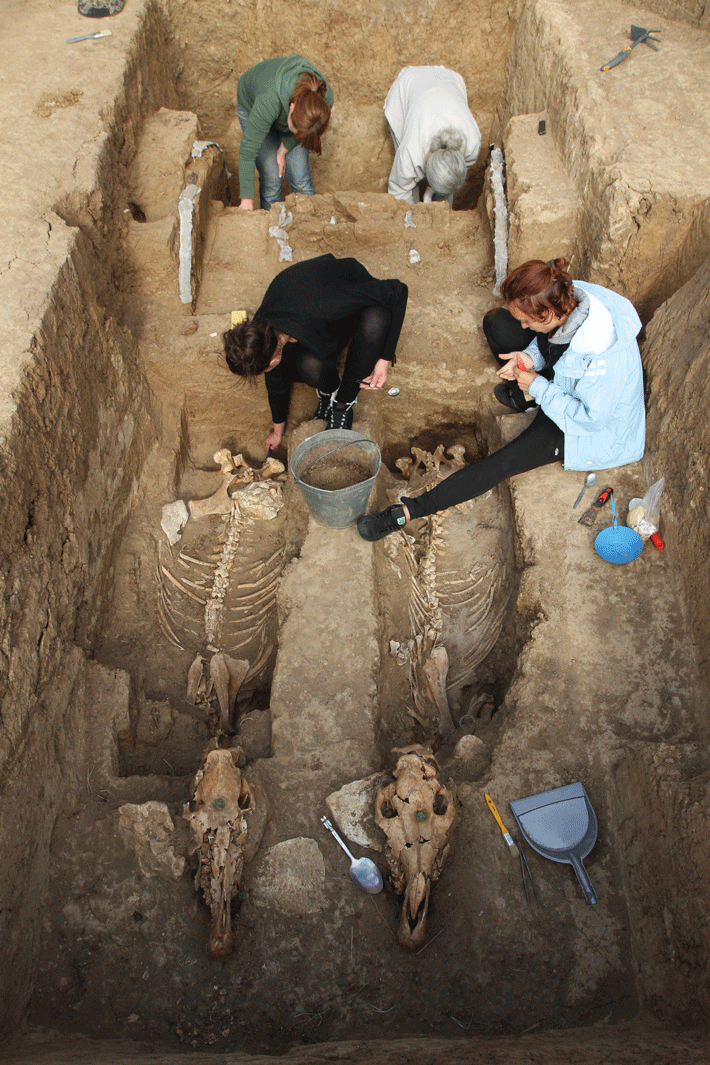 The Thracians could not have imagined life without horses—they even took their horses and chariots into the afterlife, to carry their souls to heaven. While many chariot burials have been found in Bulgaria, a recently discovered tomb from the site of Sveshtari is a rare example in which the horses were found standing upright, positioned with their heads resting on stone “cushions,” almost to appear as if they were still moving or standing, says archaeologist Diana Gergova of the Bulgarian Academy of Sciences. The burial dates to the end of the fourth century B.C. and likely belonged to a member of the Getae, one of the most powerful Thracian tribes.
The Thracians could not have imagined life without horses—they even took their horses and chariots into the afterlife, to carry their souls to heaven. While many chariot burials have been found in Bulgaria, a recently discovered tomb from the site of Sveshtari is a rare example in which the horses were found standing upright, positioned with their heads resting on stone “cushions,” almost to appear as if they were still moving or standing, says archaeologist Diana Gergova of the Bulgarian Academy of Sciences. The burial dates to the end of the fourth century B.C. and likely belonged to a member of the Getae, one of the most powerful Thracian tribes.
Mississippian Burning
By ERIC A. POWELL
Tuesday, December 10, 2013
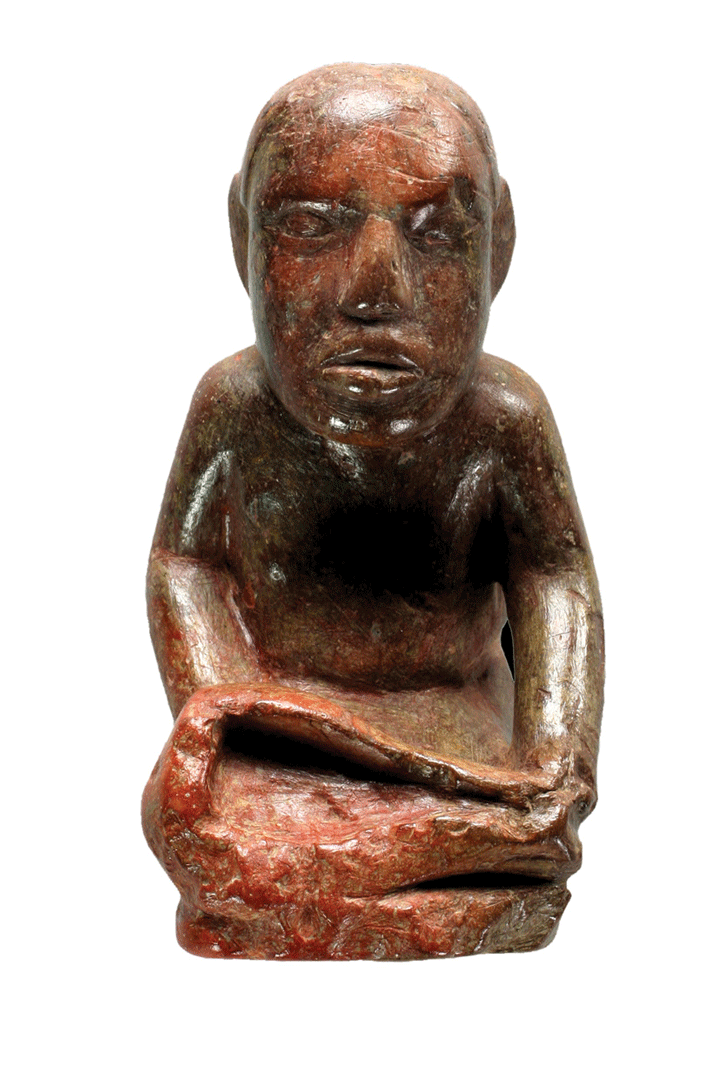 One day around A.D. 1200, a spectacular fire raged at a walled village five miles from the ancient town of Cahokia. Before long, some 100 wooden buildings were burned to the ground. Known today as the East St. Louis site, it was probably ritually important to the Mississippian farming people who lived in and around Cahokia. “My sense is this wasn’t an ordinary community,” says University of Illinois archaeologist Timothy Pauketat. “They were not just average farmers, but special people with special buildings.” Pauketat says it is likely the fire was not an accident or an act of warfare, but a ritual commemoration, perhaps deliberately lit after the death of an important leader and intended to mark the end of the era. “It looks staged. Inside the burned buildings there were found token numbers of artifacts, the same baskets of corn and ritual items that you might find in a temple,” says Pauketat. After the fire, nothing was rebuilt at the site, and large formal architecture that carried important ritual meaning disappeared from the Cahokia area.
One day around A.D. 1200, a spectacular fire raged at a walled village five miles from the ancient town of Cahokia. Before long, some 100 wooden buildings were burned to the ground. Known today as the East St. Louis site, it was probably ritually important to the Mississippian farming people who lived in and around Cahokia. “My sense is this wasn’t an ordinary community,” says University of Illinois archaeologist Timothy Pauketat. “They were not just average farmers, but special people with special buildings.” Pauketat says it is likely the fire was not an accident or an act of warfare, but a ritual commemoration, perhaps deliberately lit after the death of an important leader and intended to mark the end of the era. “It looks staged. Inside the burned buildings there were found token numbers of artifacts, the same baskets of corn and ritual items that you might find in a temple,” says Pauketat. After the fire, nothing was rebuilt at the site, and large formal architecture that carried important ritual meaning disappeared from the Cahokia area.
The Well-Dressed Dead
By JARRETT A. LOBELL
Friday, December 06, 2013
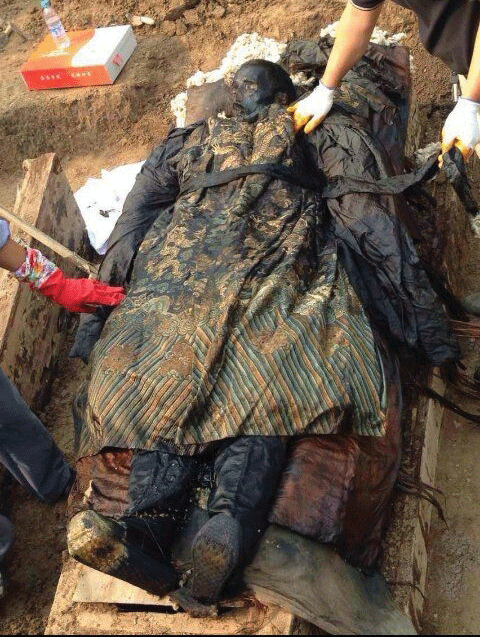 A well-preserved mummy identified as a government official from the Qing Dynasty (1644–1912)—China’s last imperial dynasty before the creation of the Republic of China—has been unearthed from a construction site in Xiangcheng City in central China’s Henan Province. Though the Chinese did not deliberately preserve their dead as the ancient Egyptians did, environmental conditions have naturally preserved many centuries- and even millennia-old bodies there in remarkable condition, often with clothing, footwear, hair, and even skin intact.
A well-preserved mummy identified as a government official from the Qing Dynasty (1644–1912)—China’s last imperial dynasty before the creation of the Republic of China—has been unearthed from a construction site in Xiangcheng City in central China’s Henan Province. Though the Chinese did not deliberately preserve their dead as the ancient Egyptians did, environmental conditions have naturally preserved many centuries- and even millennia-old bodies there in remarkable condition, often with clothing, footwear, hair, and even skin intact.
Lego Supports Slumping Mummy
By KATHERINE SHARPE
Tuesday, December 10, 2013
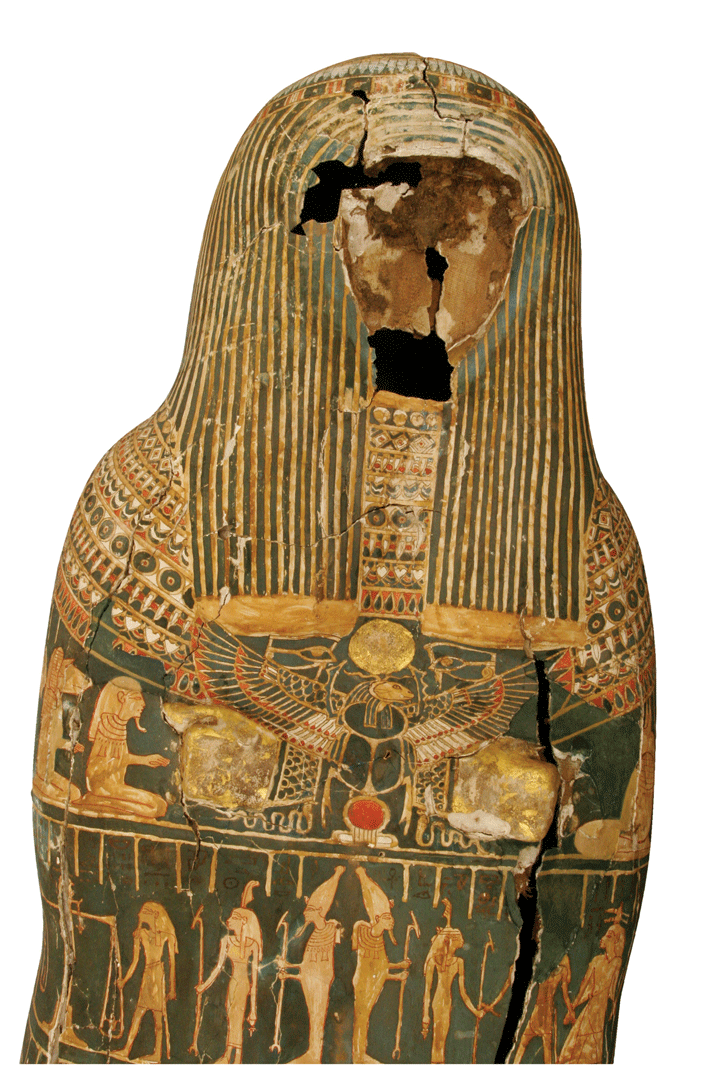
After 3,000 years, the case that had held the mummy of Hor, a vizier’s son who died in tenth-century B.C. Thebes, was in a slump. It had succumbed to years of storage in moist conditions in the Fitzwilliam Museum in Cambridge, England, and was sagging badly at the chest and neck.
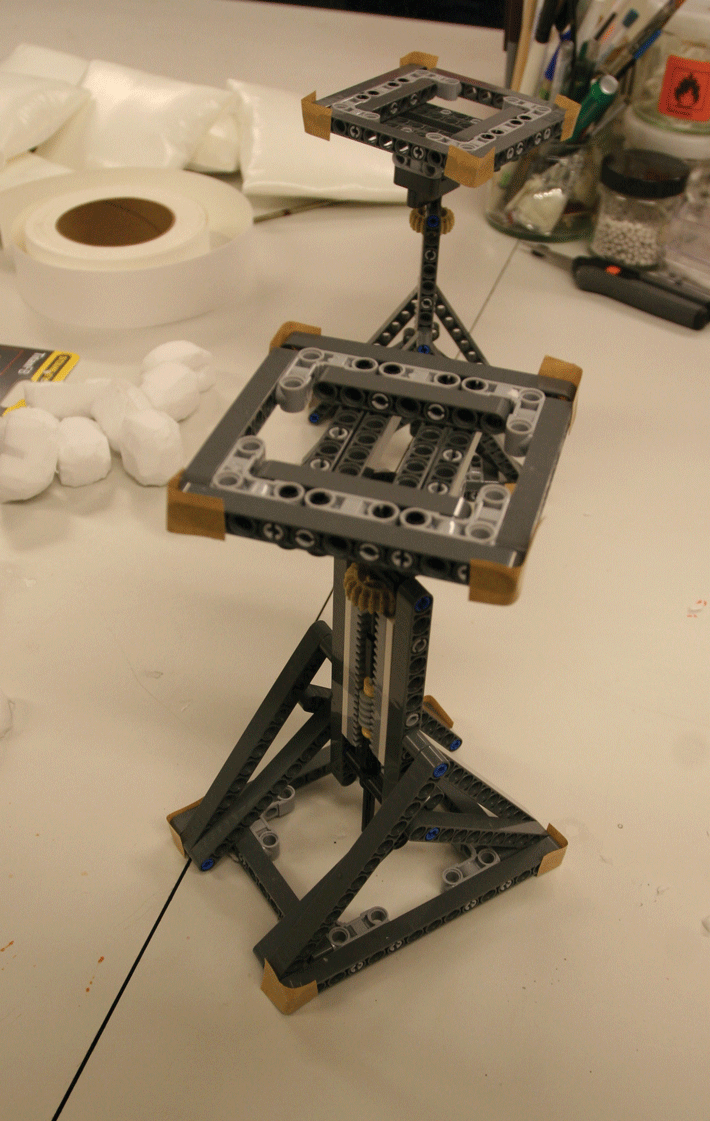 The casing is made of cartonnage, a rigid, millimeters-thick material made from layers of plaster and linen. To restore Hor’s shape, museum conservator Sophie Rowe teamed up with Dan Knowles, a 22-year-old Cambridge master’s student in engineering. Knowles constructed a special frame to suspend Hor facedown, and Rowe used an existing hole in its back to introduce moisture. After three weeks, Hor’s chest had re-expanded. Then the cartonnage needed to be held up from the inside.
The casing is made of cartonnage, a rigid, millimeters-thick material made from layers of plaster and linen. To restore Hor’s shape, museum conservator Sophie Rowe teamed up with Dan Knowles, a 22-year-old Cambridge master’s student in engineering. Knowles constructed a special frame to suspend Hor facedown, and Rowe used an existing hole in its back to introduce moisture. After three weeks, Hor’s chest had re-expanded. Then the cartonnage needed to be held up from the inside.
“We considered inflatable systems and struts radiating from a central pole,” Rowe explained. Then Knowles came up with the idea of using Lego bricks. He fashioned supports that include a threaded screw system from a commercially available Lego set, adding archival foam where the toy bricks touch the ancient cartonnage.
The Lego supports are “an elegant solution,” says Rowe, noting that the hole in Hor’s back is small, so having a system that can be adjusted by feel is a plus. Hor is now on permanent display for museum visitors.
Tracking the Ancient Apache
By ERIC A. POWELL
Tuesday, December 10, 2013
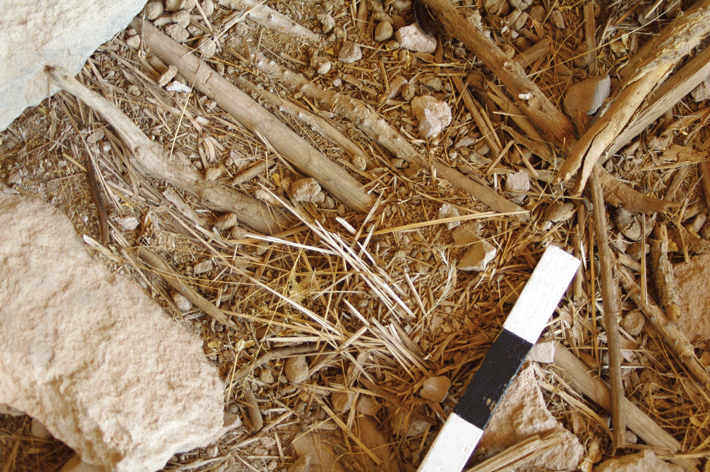 According to conventional wisdom, the ancestors of today’s Apache tribes migrated to the American Southwest sometime after the Spanish initially explored the area in the sixteenth century. But now archaeologist Deni J. Seymour of the Jornada Research Institute has dated previously overlooked storage platforms left by these nomadic people in rock shelters, and found that the people first arrived in the Southwest at least 200 years earlier than originally thought. Consisting of bases made of branches, surrounded by rocks and packed with grass or yucca leaves, these platforms were probably for long-term storage of hides filled with meat and nuts. The early dates of many of the platforms suggest that the people who became the Apache appeared in the region at the same time that communities of settled Pueblo farmers were wracked by violence. “Instead of thinking about the Southwest as a world of sedentary farmers, we should think about these Pueblo communities existing in a sea of nomadic peoples,” says Seymour.
According to conventional wisdom, the ancestors of today’s Apache tribes migrated to the American Southwest sometime after the Spanish initially explored the area in the sixteenth century. But now archaeologist Deni J. Seymour of the Jornada Research Institute has dated previously overlooked storage platforms left by these nomadic people in rock shelters, and found that the people first arrived in the Southwest at least 200 years earlier than originally thought. Consisting of bases made of branches, surrounded by rocks and packed with grass or yucca leaves, these platforms were probably for long-term storage of hides filled with meat and nuts. The early dates of many of the platforms suggest that the people who became the Apache appeared in the region at the same time that communities of settled Pueblo farmers were wracked by violence. “Instead of thinking about the Southwest as a world of sedentary farmers, we should think about these Pueblo communities existing in a sea of nomadic peoples,” says Seymour.
Advertisement
Advertisement
IN THIS ISSUE
From the Trenches
French Revolution Forgeries?
Off the Grid
Ham Hill's Violent History
Tracking the Ancient Apache
The Well-Dressed Dead
Lego Supports Slumping Mummy
Mississippian Burning
A Final Journey by Horse
Neanderthal Smorgasbord
Point-and-Shoot Obsidian Analysis
Idu: Lost City of Northern Iraq
Thorfinn the Mighty's Thing
The Doctor Is In
Artifact
Roman Britain's finest work
Advertisement

Recent Issues
-
 May/June 2024
May/June 2024
-
 March/April 2024
March/April 2024
-
 January/February 2024
January/February 2024
-
 November/December 2023
November/December 2023
-
 September/October 2023
September/October 2023
-
 July/August 2023
July/August 2023
-
 May/June 2023
May/June 2023
-
 March/April 2023
March/April 2023
-
 January/February 2023
January/February 2023
-
 November/December 2022
November/December 2022
-
 September/October 2022
September/October 2022
-
 July/August 2022
July/August 2022
-
 May/June 2022
May/June 2022
-
 March/April 2022
March/April 2022
-
 January/February 2022
January/February 2022
-
 November/December 2021
November/December 2021
-
 September/October 2021
September/October 2021
-
 July/August 2021
July/August 2021
-
 May/June 2021
May/June 2021
-
 March/April 2021
March/April 2021
-
 January/February 2021
January/February 2021
-
 November/December 2020
November/December 2020
-
 September/October 2020
September/October 2020
-
 July/August 2020
July/August 2020
-
 May/June 2020
May/June 2020
-
 March/April 2020
March/April 2020
-
 January/February 2020
January/February 2020
-
 November/December 2019
November/December 2019
-
 September/October 2019
September/October 2019
-
 July/August 2019
July/August 2019
-
 May/June 2019
May/June 2019
-
 March/April 2019
March/April 2019
-
 January/February 2019
January/February 2019
-
 November/December 2018
November/December 2018
-
 September/October 2018
September/October 2018
-
 July/August 2018
July/August 2018
-
 May/June 2018
May/June 2018
-
 March/April 2018
March/April 2018
-
 January/February 2018
January/February 2018
-
 November/December 2017
November/December 2017
-
 September/October 2017
September/October 2017
-
 July/August 2017
July/August 2017
-
 May/June 2017
May/June 2017
-
 March/April 2017
March/April 2017
-
 January/February 2017
January/February 2017
-
 November/December 2016
November/December 2016
-
 September/October 2016
September/October 2016
-
 July/August 2016
July/August 2016
-
 May/June 2016
May/June 2016
-
 March/April 2016
March/April 2016
-
 January/February 2016
January/February 2016
-
 November/December 2015
November/December 2015
-
 September/October 2015
September/October 2015
-
 July/August 2015
July/August 2015
-
 May/June 2015
May/June 2015
-
 March/April 2015
March/April 2015
-
 January/February 2015
January/February 2015
-
 November/December 2014
November/December 2014
-
 September/October 2014
September/October 2014
-
 July/August 2014
July/August 2014
-
 May/June 2014
May/June 2014
-
 March/April 2014
March/April 2014
-
 January/February 2014
January/February 2014
-
 November/December 2013
November/December 2013
-
 September/October 2013
September/October 2013
-
 July/August 2013
July/August 2013
-
 May/June 2013
May/June 2013
-
 March/April 2013
March/April 2013
-
 January/February 2013
January/February 2013
-
 November/December 2012
November/December 2012
-
 September/October 2012
September/October 2012
-
 July/August 2012
July/August 2012
-
 May/June 2012
May/June 2012
-
 March/April 2012
March/April 2012
-
 January/February 2012
January/February 2012
-
 November/December 2011
November/December 2011
-
 September/October 2011
September/October 2011
-
 July/August 2011
July/August 2011
-
 May/June 2011
May/June 2011
-
 March/April 2011
March/April 2011
-
 January/February 2011
January/February 2011
Advertisement






